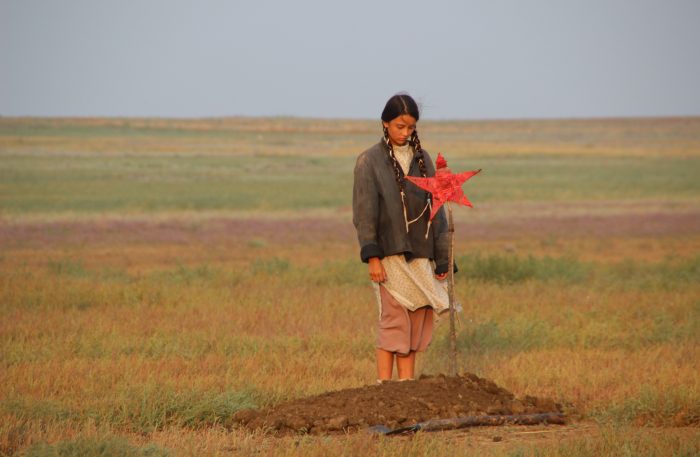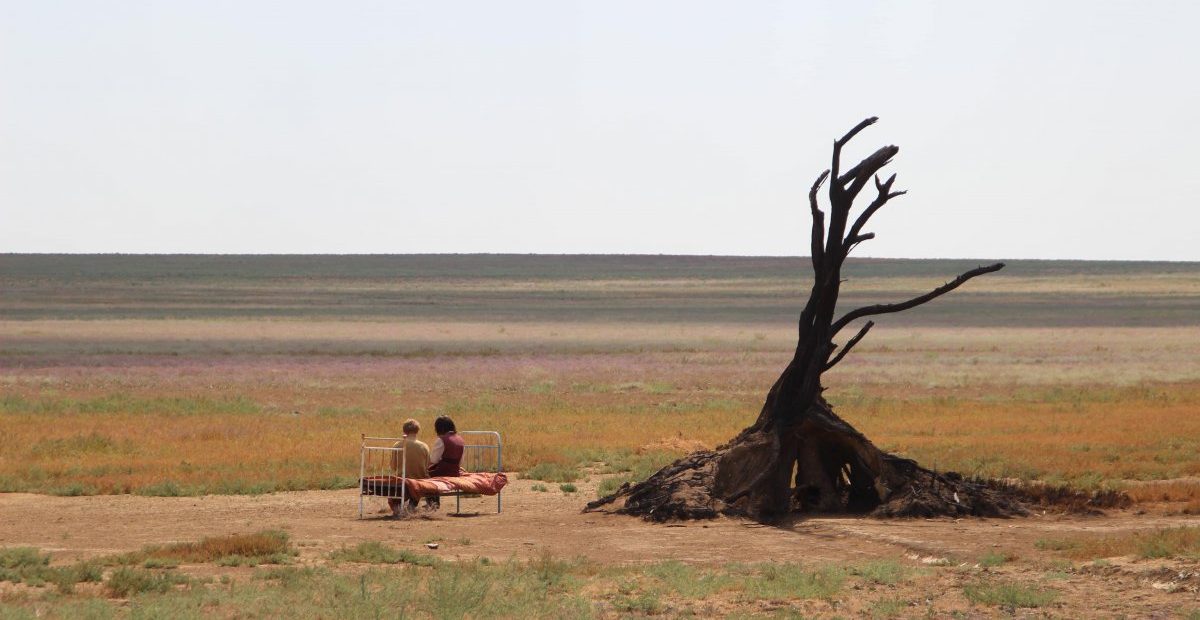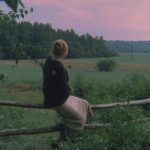Director: Alexander Kott
Alexander Kott’s wordless Test may technically be a period film – inspired by the Soviet Union’s nuclear bomb testing in the Kazakh region of Semipalatinsk in 1949 – but its setting is composed with such sparseness and its social interactions depicted with such economy that the environment seems to exist beyond any specific time, on a more abstract plane of being. When an airplane arrives at the humble home of Dina and her father Tolgat – its rapidly spinning front propeller ominously driving back its surroundings – the imposing metal structure looks downright extra-terrestrial against the expansive backdrop. And when the politics, cruelties and technological advancements of society make an impact on this setting, it is a ripple effect felt from some far off occurrence. Exposing the cold disregard for incidental human life that characterised this and many future nuclear tests in northeast Kazakhstan, Kott’s feature deftly presents impersonal history as an external, omnipotent force, capable of unceremoniously wiping thoughts, dreams and even personal histories off the face of the earth.
The central father and daughter of Test are seen to live lives that are quiet, unassuming and predictable. The solitary Dina in particular seems to long for a world beyond that which she knows but there’s an ongoing understanding, embodied by a rising and setting sun, that their lives will continue to develop along a natural, untampered course. The two developments that shape much of the central drama are those of Tolgat becoming sick due to radiation exposure and two young men – the clownish and acrobatic Max and the more esteemed Kaisyn – falling for Dina. All the while, the ongoing threat of nuclear destruction hangs over the characters while intrusive governmental authorities circle their land.

The story plays out at a hypnotic pace with an execution that’s low-key in ways beyond the absence of dialogue. That none of the film feels especially slow is a testament to its unfailingly appealing and communicative visuals. The film opens with an immediate rush to the senses, showing a scattering of white feathers over a dark and lifeless ground before panning to a small wooden table that stands alone in this bleak landscape. The grim lighting, haunting winds and contemplative camerawork render this a scene of both apocalyptic grief and aesthetic beauty.
From here the film remains adaptable but cohesive in its attractive colour schemes. There’s a minimalism to the mise-en-scène that complements the secluded location, often placing single objects or people at the centre of the frame, surrounded by flat landscapes that look like they could stretch on forever. More generally, Kott plays with visual perspectives to imaginatively suggest a world that looks smaller than it is, including one scene where Tolgat pretends to eat the sun as he stands in front of it or another where a line of sheep’s wool acts as the cloud-like foreground to a landed plane. Rather than directly imposing any sympathetic connections with the characters on the audience, the camerawork eases you into their world, placing the viewer as a part of the environment.
The result is a film that is both intimate and heavily informed by dramatic irony, upholding a tone that falls somewhere between fatalistic despair and dark cosmic comedy while still regarding the in-moment emotions of its characters. As a feature that lets its impeccably crafted images do all the talking, perhaps the closest Test comes to a wholly summative moment comes on the night when Max uses a projector to display on the exterior wall of Dina’s house a photo previously taken of Dina . With the woman in the flesh also standing within the projection’s path, we simultaneously get three perspectives of one existence in a single shot – a life, a memory of that same life and the place it is inherently tied to – but the encroaching darkness suggests that all three may be on the verge of vanishing into the past.
Watch Test on FilmDoo








